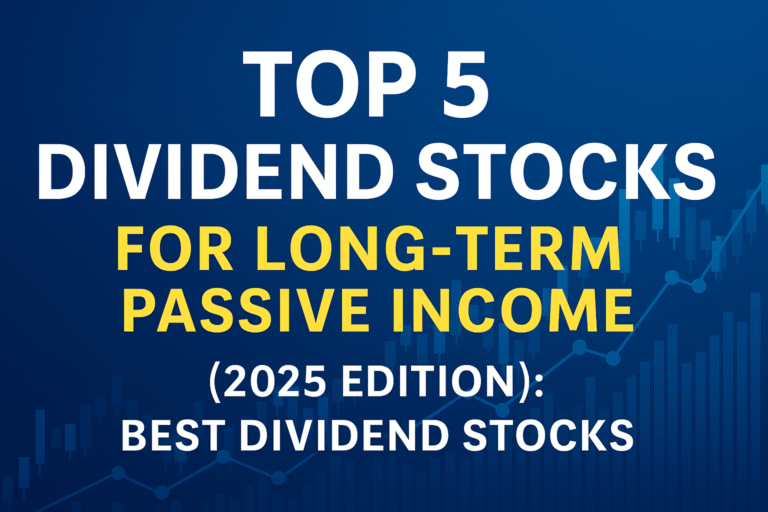Options Trading for Passive Income: A Complete Guide

Introduction
Options trading for passive income has emerged as a powerful investment strategy for individuals looking to diversify their income streams. By using options contracts, investors can generate income with minimal day-to-day involvement — making it an appealing choice for those seeking financial freedom. This guide explores multiple strategies and offers a step-by-step walkthrough to help you build passive income through options trading.
Understanding Passive Income
What Is Passive Income?
Passive income refers to earnings generated from investments or activities that require little to no ongoing effort to maintain. Common examples include rental income, dividends, and interest from savings. When applied to options trading for passive income, the idea is to use consistent, repeatable strategies to earn premiums without actively monitoring the market all day.
For more, see Investopedia’s definition of Passive Income.
Advantages of Investment-Based Passive Income
- Steady Income Streams – Options trading can produce reliable cash flow.
- Wealth Building – Reinvesting options premiums helps grow your portfolio.
- Flexibility – Passive income gives you freedom to reduce work hours or retire early.
Basics of Options Trading
Options are contracts that grant the buyer the right — but not the obligation — to buy (call) or sell (put) a security at a set price (strike price) before a specified date. Unlike buying stocks, you don’t need to own the underlying asset to benefit from price movements. Options trading for passive income makes use of this flexibility to generate consistent returns.
Check Investopedia – Options Basics for more.
Or dive deeper with our Options Trading Basics: Beginner’s Guide.
Key Concepts
- Call Option – Right to buy at a certain price before expiration
- Put Option – Right to sell at a certain price before expiration
- Premium – Income received from selling an option
- Strike Price – The predetermined price at which an option can be executed
Why Choose Options Trading as Passive Income?
- High Income Potential – Selling options provides upfront cash through premiums
- Customizable Strategies – Choose tactics that match your risk and outlook
- Capital Efficiency – Earn from market movement without owning the full stock position
Compared to real estate or dividend investing, options trading for passive income is often more flexible and quicker to scale — particularly in volatile markets.
Popular Options Trading Strategies for Passive Income
1. Covered Calls
Own 100 shares and sell a call option. You collect a premium; if the stock rises above the strike, you sell at a profit.
Example: Buy XYZ at $50, sell a $55 call, collect the premium, and profit if assigned.
Learn more: Investopedia – Covered Call
Also read our guide: Mastering Covered Call Income Strategies
2. Cash-Secured Puts
Sell a put on a stock you want to own. If it drops, you buy at a discount; if not, you keep the premium.
More info: Investopedia – Cash-Secured Put
3. Iron Condors
Neutral strategy: Sell a call and put at close strike prices, buy a further out call and put to cap risk. Ideal for low-volatility markets.
See: Investopedia – Iron Condor
4. Additional Strategies
- Protective Collars – Combine covered calls and puts for risk management
- Call Credit Spreads – Sell a call and buy another further out to reduce potential losses
Step-by-Step: How to Generate Passive Income with Options
- Choose a Broker – Look for one with good options tools, low fees, and a clean interface (e.g., Schwab, Fidelity)
- Pick a Strategy – Covered calls work well on stable stocks; condors for neutral markets
- Enter a Position – Select strike/expiration and place the trade
- Monitor Weekly – Roll or close positions as needed for continued income
Watch our full Options Trading for Beginners YouTube video for a walkthrough.
Real-Life Examples
Covered Call Example
You own 100 shares of ABC at $60. You sell a $65 call and receive a $2 premium per share.
- If the price stays below $65, you keep your shares and $200 premium.
- If it rises above $65, your shares are sold, but you still profit from the gain + premium.
Cash-Secured Put Example
You want XYZ stock at $90 (currently trading at $95). You sell a $90 put and receive $3/share.
- If the stock falls and you’re assigned, your effective purchase price is $87.
- If not, you keep the $300 premium.
Pros and Cons
Advantages
- Recurring Income – Weekly/monthly premiums
- Customizable Risk – Choose conservative or aggressive setups
- Lower Capital Barrier – Start small vs. rental properties or businesses
Disadvantages
- Volatility – Markets shift fast
- Assignment Risk – You might need to buy/sell at less favorable prices
- Complexity – Learning curve for more advanced strategies
Tips for Success
Learn Continuously
Take courses, read articles, and join communities like Reddit’s r/options.
Browse Savvy Investing Hub’s education section for trusted tips.
New to this topic? Start here: Efficient Investing Tips for Busy Investors
Diversify Your Strategy
Don’t bet on just one stock or tactic. Mix strategies to reduce risk.
Stay Disciplined
Stick to a consistent plan. Avoid overtrading or chasing high premiums.
FAQ
Q1: Can I start with less than $1,000?
Yes. Tactics like cash-secured puts on low-priced stocks can work with small accounts.
Q2: How frequently can I earn income?
Many traders sell weekly or monthly options, generating consistent income.
Q3: Are covered calls safe?
They’re lower-risk when used on solid dividend stocks but do cap your upside.
Conclusion
Options trading for passive income isn’t just a tactic — it’s a repeatable system. With consistent application of covered calls, cash-secured puts, and basic income strategies, you can steadily build returns while limiting risk.
📥 Want a system that saves time and grows wealth?
Download The 5-Minute Daily Investing Plan — free for subscribers.






